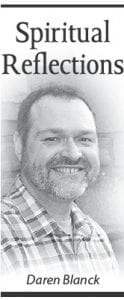This past Wednesday many Christians observed the beginning of the Lenten season with the imposition of ashes. Usually the ashes are mixed with water and olive oil and applied to the forehead in the shape of the cross.
It is a curious thing, this wearing of ashes on one’s forehead. It seems slightly medieval and perhaps frightening. But what does it symbolize and what does this ancient custom reveal to us in the 21st century?
First, we apply ashes in recognition of our own mortality. “Dust to dust, ashes to ashes” the officiant repeats during the committal service in the traditional Anglican and Lutheran liturgy. Culminating with the Good Friday vigil and the Resurrection of Christ on Easter Sunday, the Lenten season is nothing if not an opportunity to reflect on our mortality in this fleshly form, prompting us to wonder, “is this all there is?” Christians hold to the hope of the resurrection, the hope that in Christ the faithful dead shall be raised, that Christ’s passion means a home “not made with human hands” beyond this mortal coil. But first we must all confront death and our utter helplessness to ultimately stave it off. As someone once quipped – “none of us are getting out of here alive.” We are ashes.
Second, we apply ashes because if we are to truly grasp ahold of the gospel we must recognize that we are, in the Lutheran liturgical tradition, sinful and unclean. Sin has such negative connotations today – it’s seen as a word of judgment and hypocrisy. The Greek word usually translated as “sin” in the Bible means something more like missing the mark or straying from the path. Christians recognize that all of us are guilty of this, despite our best efforts we do things that we know we ought not do, or we don’t do the things we should do. Even the best intentioned of us sometimes put selfish gain above our neighbor’s need. Luther used the expression “saint and sinner.” We are saints in the New Testament sense – holy by virtue of Christ’s righteousness, not our own, but still living in a fallen world. Often in the Old Testament when called to repentance even great kings would tear their clothing and heap ashes on their heads as a sign of their sorrow for their sins and as a sign of repentance and humility.
Third, ashes remind us of our connection with the created order. If we’re honest most of us have a propensity for trying to elevate and isolate ourselves from the created order – we think of ourselves as different in some substantial way from the animals of the forest. But in Genesis we are only different in image and responsibility. Ours is to reflect God’s kingship and justice and steward God’s creation.
Ashes are essentially carbon, what’s left after the rapid oxidation of organic matter. As such it is the stuff of stars, the stuff of life, and that, which connects us to every living thing on this planet.
We require glucose (C6H12O6) manufactured by plants, we exhale carbon dioxide (CO2), and decomposition replenishes the carbon in soil. (On an important side note, our actions with regard to burning fossil fuels have no doubt led to a carbon cycle that is radically out of whack.)
Additionally it is nearly impossible to overstate the importance of water as a symbol in the Christian faith: baptism – the living water of faith – Jesus walking on water – the flood and its subsequent promise, to but touch the surface. Water, too, is important to all life and a symbol of the created order. Water and ashes remind us that we are all connected to this planet and that we have been given the responsibility to steward it with wisdom and care.
Finally, ashes connect us with our past. Christians have observed Ash Wednesday with the imposition of ashes since at least the 11th century, four centuries before the Reformation. In the Old Testament period the Israelites observed an annual Day of Atonement. Yom Kippur is still observed by Jewish communities to this day.
The Apostle Paul uses the analogy of an olive tree when discussing our relationship as Christians with the children of Israel – in Christ we are grafted onto the trunk of the tree of his chosen people.
The olive oil and the ashes, like liturgy, remind us of that “great cloud of witnesses” that have gone before us in faith. The ashes often used on Ash Wednesday are those of the palm fronds from the previous year’s Palm Sunday, connecting us with not only the ancient past but also our immediate past. They remind us of our historic unity and continuity in faith and encourage us to leave a legacy of faith, hope, and love for posterity.
Each month a member of the Cook County Ministerium will offer Spiritual Reflections. This week our contributor is Daren Blanck, pastor of Zoar Church in Tofte, a teacher at William Kelley High School and a student of Beyond the River Academy, a ministry program of Lutheran Congregations in Mission for Christ.



Loading Comments